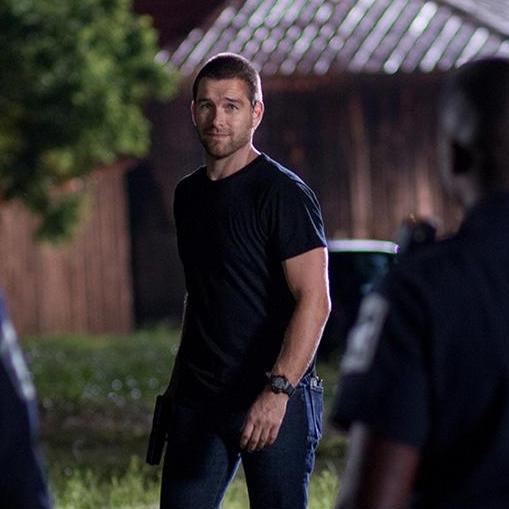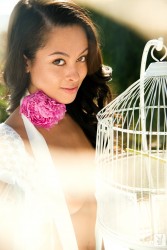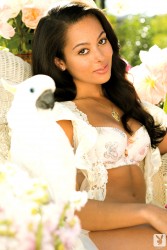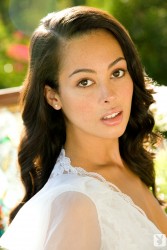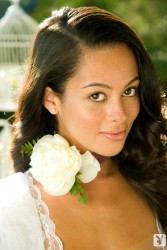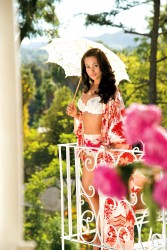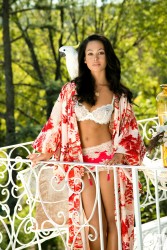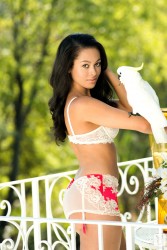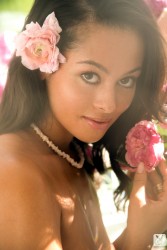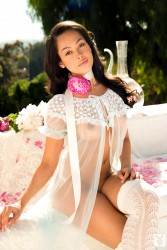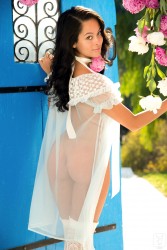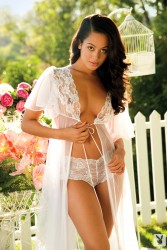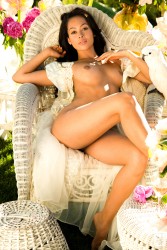I'm curious if you've ever been naked in a major production so everyone gets to evaluate you. If not, then who are you to talk about what's liberating and what isn't? I've worked with actresses who've done nudity, and they had different opinions on it.
* Then please enlightened me. Here is your opportunity. I will post word for word on the blog your own assessment and the views of actresses who felt it was demeaning and confessed to you about it. As you can see, my site celebrates (film) nudity but it also provides the avenue for the other side to argue against it. I’m really curious. These actresses you referred to…were they coerced into accepting roles that required nudity? Were they hoodwinked into it in the first place? Forced at gun point to do nudity? Are they too mentally incompetent or raw or new to the biz or naïve (take your pick) to say no? Or badly misrepresented into believing there is no repercussions in doing a nude scene (pics all over the Internet, folks talking more about the nude scenes than the performance itself ala Kristen Stewart in On the Road).
Was it the only nude scene they did or the usual I-hated-the-experience but kept doing them in other flicks for no other discernible reason than for the obvious financial kind?
Was it the only nude scene they did or the usual I-hated-the-experience but kept doing them in other flicks for no other discernible reason than for the obvious financial kind?
Who are the evaluators you mentioned? On the set or on various web-sites? Please elaborate.
I stated my own personal opinion on the subject (when I was in HW back in early 90’s when it was still brutal to be an actress of B-list variety) but it’s clear you are very much involved in the industry. In your opinion and talking to various actresses…what are the factors preventing them from doing (or scared them shitless about) on-cam nudity?
I stated my own personal opinion on the subject (when I was in HW back in early 90’s when it was still brutal to be an actress of B-list variety) but it’s clear you are very much involved in the industry. In your opinion and talking to various actresses…what are the factors preventing them from doing (or scared them shitless about) on-cam nudity?
+++++++++++++++++++++++++++++++++++++++++++++
Rooney Mara talks about death and on-screen nudity in Interview magazine
The 'Side Effects' star gets candid aboutt cursing, nudity and on-screen sex with co-star Channing Tatum in sit-down with her director, Stephen Soderbergh
By Daily News Staff / NEW YORK DAILY NEWS
+++++++++++++++++++++++++++++++++++++++++++++
 What is the real age of Lili Simmons?
What is the real age of Lili Simmons? Age: 18
Birth date: 10. 11. 1994
Birth place: San Diego, California, USA
Sign: Scorpio
Poptower:
Age: 19 years old
Birthday: July 23, 1993
Height: 5' 7"
Weight: 113 lbs.
Birthplace: La Jolla, CA
Birthday: July 23, 1993
Height: 5' 7"
Weight: 113 lbs.
Birthplace: La Jolla, CA
Born : October 14, 1992
UT_SanDiego (dated Nov. 9, 2011)
Geek chic: 18-year-old Cardiff native Lili Simmons landed a leading role in Disney Channel’s new TV movie, “Geek Charming,” which debuts Friday at 8 p.m. The actress, whose family lives in Cardiff-by-the-Sea, is coming home to watch the film about life in high school, with several of her former Canyon Crest Academy schoolmates.
The moral of its fairy-tale story? “Be yourself and people will love you for who you are,” the actress says.
UPDATE (thanks to anonymous source)
The current (March 2013) issue of Nylon Guys magazine has an article about Lili Simmons which refers to her as a 19-year-old. The Facebook page you linked to isn't her. This is the real one, which she mentioned on her verified Twitter account: Facebook
UPDATE (thanks to anonymous source)
The current (March 2013) issue of Nylon Guys magazine has an article about Lili Simmons which refers to her as a 19-year-old. The Facebook page you linked to isn't her. This is the real one, which she mentioned on her verified Twitter account: Facebook
+++++++++++++++++++++++++++++++++++++++++++++
First shoot with Sharee, sexy and innocent young girl from Ohio.
+++++++++++++++++++++++++++++++++++++++++++++
Showrunner Greg Yaitanes Talks BANSHEE, What Drew Him to the Show, Telling the Story in 10 Episodes, the Freedom of Cable TV, and More
by Christina Radish

The Cinemax action series Banshee tells the story of Lucas Hood (Antony Starr), an ex-con and master thief who assumes the identity of the sheriff of Banshee, PA. It’s the perfect cover for him to try to win back the love of his life (Ivana Milicevic) and hide out from the dangerous gangster (Ben Cross) that they both betrayed years earlier, while attempting not to get into too much more trouble.
During this recent exclusive interview with Collider, showrunner/executive producer/director Greg Yaitanes talked about how he came to be a part of Banshee, what it was that drew him to the show, the challenge of having so much story to tell in 10 episodes, how liberating it is to work with the freedom of cable television, and having so many criminal elements to explore. He also talked about always knowing that he’s wanted this career, his meeting with Joel Silver when he was in his 20′s, and his preference for digital over film. Check out what he had to say after the jump.
Collider: How did you come to this show?
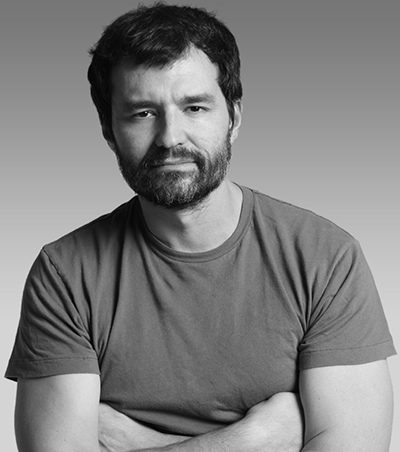 GREG YAITANES: I would say that I was the show’s stalker. I executive produced the last four seasons of House, and as I was thinking about what I wanted to do next, I knew I wanted to work with HBO, who I’d never worked with, and I wanted to work with Alan Ball. I did not imagine that both things would collide by working through HBO, through Cinemax, and working with Alan Ball, through running one of his shows. I had heard about Banshee when it was originally titled Hood. That came on my radar in early 2011, and I followed it all through 2011. By the end of the year, my agent had called me to tell me that it was go time, and I put together a pitch video. I made a trailer for Banshee out of other movies and showed that in the room. I used that as a way to show people what the show could be. I just was very passionate about the characters and the world. I went at it like, “I’m going to go get this job! This could not be a better situation, and this is everything that I want to do next.” I had been on the end of creating shows, finding material and getting things off the ground, but this was something that, where that’s exciting, this felt like a world I had to be a part of and I wasn’t going to take no for an answer.
GREG YAITANES: I would say that I was the show’s stalker. I executive produced the last four seasons of House, and as I was thinking about what I wanted to do next, I knew I wanted to work with HBO, who I’d never worked with, and I wanted to work with Alan Ball. I did not imagine that both things would collide by working through HBO, through Cinemax, and working with Alan Ball, through running one of his shows. I had heard about Banshee when it was originally titled Hood. That came on my radar in early 2011, and I followed it all through 2011. By the end of the year, my agent had called me to tell me that it was go time, and I put together a pitch video. I made a trailer for Banshee out of other movies and showed that in the room. I used that as a way to show people what the show could be. I just was very passionate about the characters and the world. I went at it like, “I’m going to go get this job! This could not be a better situation, and this is everything that I want to do next.” I had been on the end of creating shows, finding material and getting things off the ground, but this was something that, where that’s exciting, this felt like a world I had to be a part of and I wasn’t going to take no for an answer.Because House was so often confined to the inside of the hospital, had you been looking for something that would be more out in the open?
YAITANES: No. I think some of the best episodes of House got out of the hospital, like “House’s Head,” which was the one that I won the Emmy for, and “Nobody’s Fault,” which was the episode I was doing with Jeffrey Wright, when I got the call to go meet on Banshee. I never fault claustrophobic doing that show, so I wasn’t looking to find myself out with big vistas in Amish country. I was just looking for good material. Sadly, I think there is a real lack of good material. As good as TV is, I think there are a lot of misses going on. So, to find something that I so deeply connected with was rare. I not only wanted to continue to tell the stories, but I also wanted to know the story behind the story. That’s why we started the Banshee origins with the comic book and a series of backstories that I shot for each character, so that you get some insight into each character prior to the pilot starting. The great thing about building a cast that most people aren’t aware of, and building a crew and having writers that are new to television, is that I got to geek out with every dream that I had. Eventually, I hit the wall with House, in terms of people being game with stuff. I got the In House app launched and I got some nice accomplishments and innovation out of it. But with Banshee, I could say, “Wouldn’t it be cool to see how Siobhan became a deputy? Let’s write that and shoot it.” We shot backstories for every character, that give everybody a nice insight into aspects of how they came to be, which is cool. I was just riveted by all the mythology around the show. I’m a fan, as well as the showrunner.
 Did you intentionally want to make sure this show opening in such a way that people would know what they were watching, right from the first scene?
Did you intentionally want to make sure this show opening in such a way that people would know what they were watching, right from the first scene?YAITANES: Exactly! When I met with Alan Ball for the first time, I said, “When I watched True Blood, I knew exactly how to watch the show from this one shot that you did when he lays the Tru Blood on the counter in the bar, in the opening of the pilot. You were telling me that it’s a little bit unreal, and not to take it too seriously.” With Banshee, I wanted to set up the town immediately. One of the pleasurable things about moving over to cable, and especially with telling the story of Banshee, was that we could have the first 10 minutes of the show have barely anybody talking. It was just great to show rather than tell, and to see the journey of the character. We opened, and there was a certain iconic-ness to catching up with this guy as he was getting out of jail. He’s coming from some place and leaving something behind, and there’s a story there. There’s also a story before it that put him there. I liked that, right out of the gate, you were dropped into the middle of what’s happening. We just drop you into the middle of what’s going on, and we don’t shy away.
Do you like having the freedom of cable television, where you can make each episode a mini-movie?
YAITANES: Having those additional brushes to paint with is very liberating. You always want to be grounded in the character and the story, and be organic. I don’t want to ever exploit the fact that we can have nudity and violence. Everything comes from Lucas’ character and his impulses. But, it is a new sense of challenges. You’re doing a 42-minute hour on network TV versus being able to tell these stories, as long or as short as you want. It’s great and freeing. Every episode of Banshee feels very satisfying because it’s exactly the length the story needed to be told in. Some are longer than others, but ultimately, I wanted to create an experience where we even used the title sequence to tell a story and we added a scene at the end of the credits, just to give everybody a little extra something. If people watch the show and feel like we cared to give them that experience, it will only encourage us to give them more in the second season. Everything about the show is teaching you the way to watch it. Hopefully, we’ve moved the ball forward in television, in some ways. Everything is giving us some insight into the character, and I don’t want to leave a minute on the floor, that I could be using to tell some sort of story for the audience.
How did you approach the way you wanted to handle the violence on this show?
YAITANES: I like that we’re not a gun show. We have some guns in it, but it’s not a shoot ‘em up show. There’s a lot of fist-fighting, throughout the season. The intimacy of fighting is evoking some sort of emotional connection. The fact that it’s so intimate, Lucas craves that.
Who would you say is a bigger threat to Lucas Hood, Kai Proctor (Ulrich Thomsen) or Rabbit (Ben Cross)?
YAITANES: In a way, Lucas’ biggest threat is losing Carrie (Ivana Milicevic). I see Proctor and Rabbit very much as these external elements that could drive a wedge between them. Proctor is on a collision course for Lucas, and Rabbit is on a collision course for Banshee. All those things will come to a head. Lucas’ impulse to pick up that phone is going to have consequences that ripple throughout the season.
How did Job come about, and what was it about Hoon Lee that made him the right actor for that role?
YAITANES: Hoon made that character come to life. There was no second choice to Hoon. Hoon was the first person we saw read it. I saw about 100 people after him, and none of them were as good as Hoon. The thing I love is that you don’t know if the character is gay or straight. He has a unique style and he’s fierce. I love it!
How much of Job is actually on the page?
YAITANES: It’s all on the page, especially once we cast Hoon and they could write to him. He just brought his own thing to it, as well as took it off the page. The guys (David Schickler and Jonathan Tropper) love writing Job. And Jonathan even wrote the script for the comic book because we want every part of Banshee to be canon and part of the show. So, Jonathan was like, “I have to control myself. I can just keep going with Job. I could write him for days ‘cause he’s just so much fun.” It’s a great character, and they really have him down. It’s great, and Hoon is amazing at it.
This one town has so many different criminal elements in and around it, with the Amish, the skinheads, the Ukranian mob and the Native Americans. Is it fun to have all of those layers to explore?
 YAITANES: There’s so much narrative out there that our challenge is that we have only 10 episodes, so we go for broke. The audience gets 10 phenomenally satisfying episodes, and each episode gets better than the one before it. It just keeps escalating. There’s no filler, anywhere. There’s so much stuff that we can tap into and there are so many worlds that it barely fits into the season.
YAITANES: There’s so much narrative out there that our challenge is that we have only 10 episodes, so we go for broke. The audience gets 10 phenomenally satisfying episodes, and each episode gets better than the one before it. It just keeps escalating. There’s no filler, anywhere. There’s so much stuff that we can tap into and there are so many worlds that it barely fits into the season.How deeply will you explore the Amish and the Native American elements?
YAITANES: It will always be in the background, but it will come more into play. Carrie’s alter-ego, Lucas’ double life and Rebecca’s double life will all collide with each other and continue to be a threat to both Lucas’ identity, as well as part of the backdrop of what we’ll explore. So, at different times during the season, the Native Americans will come into the foreground or the Amish will come into the foreground. The tribe is a mix of old and new culture. Benjamin Longshadow is a dear friend of Kai Proctor, but as his sickness continues, Proctor tries to make an alliance with the younger son and they jockey for power. And the clash in culture from the Amish to the Native Americans will come to the foreground. We will have represented that with stuff left to discover about Banshee, in future seasons.
Who will Odette Annable be playing?
YAITANES: The thing I love about this show is that, come Episode 8, we’re still introducing new characters. The show keeps getting bigger, all the way to the end of the season. She plays a Native American assassin that is the sister of Alex Longshadow. She’ll come back to Banshee and be present for some of the goings-on of the finale.
Have you always just had a very clear idea of what you wanted to do, for a career?
YAITANES: I picked up a camcorder when I was 14, and it felt like home, in my hands. It started there, back in the early ‘80s, and continued on as a hobby, and then became a passion and a career. It was always what I knew I was good at. It’s good being good at one thing, and I’m good at this, so it made it very easy to follow that path.
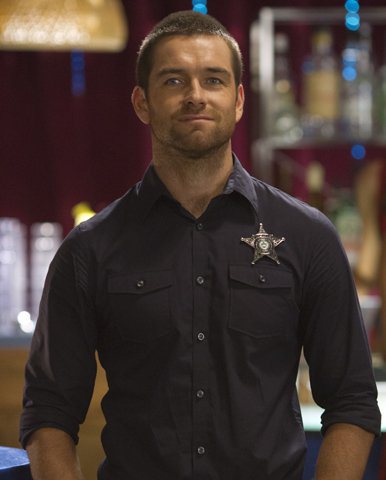 Did you really sit for seven hours, waiting for a 10-minute meeting with Joel Silver?
Did you really sit for seven hours, waiting for a 10-minute meeting with Joel Silver? YAITANES: At that point in my life, I was in my early 20′s and I had nothing else to do. I grew up on Joel’s movies and I was sitting in his office, surrounded by giant posters. There was all this history around me. I was sitting on the lot at Warner Bros., in my early 20′s, and I wasn’t going to just go home and watch TV. I was going to wait him out. I had something to show, and I wanted an audience . The joke is that I would have waited 24 hours. I would have spent the night in that lobby, for the chance to present my material. And frankly, that’s a side of me that hasn’t changed, even at this point in my career. Anybody that wants to sit down and take a meeting with me, I’ll go. I went through five meetings to become showrunner of Banshee because HBO’s vetting process is phenomenally thorough. My agents were like, “We’re done! No more meetings!” I was like “Dude, I will go all day long and talk about this show. I will talk to anybody about it, as many times as they need to hear it.” Being hungry and staying hungry is something that I really try to take pride in. No matter what level of success I’ve achieved, I always love being able to talk about the craft and continue to talk about my art.
As a director, do you have a preference for film versus digital?
YAITANES: I’ve always had a preference for digital, all the way. I grew up through video and camcorders, and I was part of the VHS generation. I made all my stuff in high school on video, and worked for public access. Staying in digital is a very familiar, very natural progression of the things that I’ve worked in before, and I always try to break as much new ground as I can. When I did Children of Dune, we were the longest thing that had shot on digital, at the time, shortly followed by Lucas doing the Star Wars prequels. I shot the House finale on the Cannon 5D. We were using a DLSR photo camera to shoot video, and shot the finale on that. I’m always looking to advance that. And we played with some new camera systems and some new ideas on Banshee. I love digital, especially for television. I just see it as a great aesthetic and a great tool. I love it!
Banshee airs on Friday nights on Cinemax.

+++++++++++++++++++++++++++++++++++++++++++++
Marion Cotillard Getting Dressed Up For 'Diary Of A Chambermaid'

The actress is in negotiations to take the lead in another cinematic adaptation of Octave Mirbeau's classic "Diary Of A Chambermaid" for French helmer Benoit Jacquot ("Farewell My Queen," "Sade").
Cotillard will take the lead role of Celestine, a chambermaid for wealthy families through whose eyes we see the seamier sides of upper class life. Among them, her first employer becomes so obsessed with her boots that when he dies, he's found with one of them stuffed in his mouth. And she later comes between the power struggle of a bourgeois couple.
It's been nearly fifty-odd years since the last time the story was mounted on screen, and certainly today the adaptation can push the boundaries a little more. This is expected to be a major role for Cotillard with Variety noting that she'll be "appearing in virtually every shot."
Sounds tantalizing indeed, but we'll have to wait: lensing isn't expected to get underway until March 2014. That said, Jacquot (who also co-wrote the script) is rounding up the team behind "Farewell, My Queen" -- the Marie Antoinette film with Lea Seydoux and Diane Kruger -- which recently nabbed ten Cesar nominations. So expectations will be high.
+++++++++++++++++++++++++++++++++++++++++++++
Hundreds of swimmers shed clothes for charity
Tuoitrenews/Reuters
Updated : Sun, February 17, 2013,11:03 AM (GMT+0700)
Updated : Sun, February 17, 2013,11:03 AM (GMT+0700)
More than 400 people swam naked in the 'Sydney Skinny', a 900-metre nude swim, held at Clobbers beach in Sydney on Feb. 17 to raise funds for the Foundation for National Parks and Wildlife.
Organizers said they hoped the nude swim would help people to get rid of worries about body image.
Below are some photos by Reuters:







Organizers said they hoped the nude swim would help people to get rid of worries about body image.
Below are some photos by Reuters:




People walk out of the water after participating in the "Sydney Skinny", a 900-metre (2,950-ft) nude swim, at Clobbers beach in Sydney February 17, 2013.


People cover themselves with sarongs after participating in the "Sydney Skinny", a 900-metre (2,950-ft) nude swim, at Clobbers beach in Sydney February 17, 2013.

People walk out of the water after participating in the "Sydney Skinny", a 900-metre (2,950-ft) nude swim, at Clobbers beach in Sydney February 17, 2013.
+++++++++++++++++++++++++++++++++++++++++++++
Tweedly Dee
from Galore Mag+++++++++++++++++++++++++++++++++++++++++++++
 Ashley Doris : Playmate Miss March 2013
Ashley Doris : Playmate Miss March 2013 Get off to a good start with our Miss March 2013, Ashley Doris. She’s all natural, with long, dark hair and deep brown eyes. “I’m from West Hartford, Connecticut,” she says. “I work as a florist, and I model on the side. I would describe my personality as creative – I studied ballet for fifteen years.” We met Ashley in Las Vegas – she was on vacation, and we had a casting call in her hotel. “My friend and I were waiting for an elevator, and we were noticed by a casting agent,” says Ashley. “I went in for a test shoot, and three weeks later, I was booked.” We had her pegged as an Amateur, but Hef took one look at her photos and knew he’d found his March Playmate. “I had a great time at my Centerfold shoot,” she says. “The house we shot in was perfect, and had one of the best views I’d ever seen. I loved my hair and makeup, and I loved the clothes – while I was wearing them, I mean.” When she’s not working, Ashley spends time with her friends – talking and laughing with the girls, going to dinner or a movie – or she works in her garden, where she raises her own flowers. She’s a great cook, too, and can whip up a three-course meal without batting an eye. “I don’t like rules or boundaries, so I’m happy being single,” she says, “but when I go on a date with a guy, I want to be treated with respect. That’s what separates the men from the boys.”
Video:
More of Ashley here (scroll down)
+++++++++++++++++++++++++++++++++++++++++++++
* My heart is in my mouth right now. Lisa...it's time to shine. Reveal yourself to the world like you never done before. Please don't be a cocktease. Let Cheadle rip open those bra.
Meanwhile, Ronete Levenson (Tess) first nude scene was either scrapped during post-productions stage or I got the timing (episode) wrong.
30-years old comedian Jenny Slate - been told - plays Doug girlfriend and some nudity should be expected from her.
+++++++++++++++++++++++++++++++++++++++++++++
For York County art students, a nude model is no luxury
Nude modeling might not be for all, but as the Greeks learned, it's essential for artists.
Updated: 02/17/2013
 |
| John Hammack of York holds a pose. Hammack got into nude modeling while he was getting his master's degree. (DAILY RECORD/SUNDAY NEWS - KATE PENN) |
He is frozen in place, basking in rays of light that seem radiant enough to beam him up. Two minutes elapse. John Hammack shifts poses, wrapping his arms around ropes hanging from grappling hooks in the ceiling.
A circle of desks surrounds him. In the seats, art students -- many half his age -- stare intently, participating in a creative rite of passage that started with ancient Greek artists who celebrated the human body.
 |
| Samantha Marks of Harrisburg draws John Hammack in a pose during a drawing class at the Art Institute of York. (DAILY RECORD/SUNDAY NEWS - KATE PENN) |
Students in Darren Jordan's drawing and anatomy class at the Art Institute of York are still honing their craft. Some of their sketches bear resemblance to Hammack. Others, not so much.
"I never assume what's on the paper is what I actually look like," Hammack said, in a classroom at the Springettsbury Township school. "That way I don't get insulted."
Like other local models, Hammack, 56, travels the circuit, posing for art students across the region, from York College to Millersville University to the Pennsylvania College of Art and Design.
To him, this art within an art is much more than stripping down.
---
Every model has a reason.
For some, it's extra income. For others, it is camaraderie or a sense of contribution to the creative community. Sarah Grim fell into it by happenstance. For her, it's liberation.
"I would be naked all the time if I could," she said. "I'm simply clothed for expression and warmth."
The 24-year-old, a former Hooters girl, hadn't done much modeling until a few months ago when a mutual friend put her in touch with Jordan, who was seeking models for his class.She posed first for the school's open drawing, which allows the public to draw figures every Wednesday night for $5 a person. The job suited her well.
"It's good for me mentally," she said. "There's something about sitting still with no shield -- nothing to cover me up -- that relates to what I'm going through internally. I just need to accept it, be aware of it and be content with whatever's going on in my life."
By day, she works at Bistro 19 and Sweet Melissa's Dream, both in York. Her newfound hobby, she said, doesn't come up much.
But when it does, it's a talker.
"The first question is usually, 'How much does it pay?'" she said. "The next question is usually, 'Is it nude?' Most people say they'd do it if it wasn't nude."
During one class, she brought a book to read -- The Art of Living by Stoic philosopher Epictetus.
"I'm contributing to classes that create beautiful art," she said. "No one's going to look at that drawing in a perverse manner. They're going to appreciate it for what it portrays -- the beauty of art and its form."
Courtney Shumway, 29, isn't shy. The self-employed artist spends most of her time working on her company, Bad Ferret Films, which produces independent films and commercial projects for clients.
She started art modeling at the Art Institute while studying digital art at the school, where she earned her degree in 2010.
When her full-time job slows down, she fills the gaps by modeling nearly every day in classrooms at HACC's York and Lancaster campuses, York College, the Art Institute of York and the York Art Association.
 |
| A sign on the door announces a model during a drawing and anatomy class at the Art Institute of York. (DAILY RECORD/SUNDAY NEWS - KATE PENN) |
"I think the students are more uncomfortable," she said. "We're modeling with college-aged students. It's their first time working with a model. It's important to set the tone for them and make sure it's a comfortable space. They need to know it's a working environment."
---
There's no eluding the obvious: Hammack -- a politically conservative father, husband and local security guard -- takes his clothes off for money.
Twenty dollars an hour, to be exact.
Hammack estimates more than 10,000 people have probably seen his birthday suit.
Still, nothing out of the ordinary has ever happened.
"I've been hit on in an elevator in Atlanta more times than I've been hit on in an art class," he said.
More than 20 years ago, Hammack said, he was in a locker room with an art teacher, who later approached him about art modeling. Back then, the job paid $8 per hour.
"I didn't really take the whole thing as a compliment then," he said. "Thinking back, it probably was."
Then a master's degree student, Hammack took the gig.
"My wife tells me I do it to stay in shape," he said. "I'm too narcissistic to model if I'm out of shape."
The night before a class, he starts his routine.
He doesn't eat beans.
The day of class, he doesn't exercise, because muscle fatigue could hinder his posing.
Caffeine is out of the question.
He arrives to the job site about 15 minutes early and enters the bathroom, where he does a few push-ups and sit-ups to limber up.
Then, he puts on a white Judo robe and a black belt. It's art model etiquette, he said.
Something about removing street clothes in the classroom feels too much like stripping.
"Not to cast aspersions on people who find themselves doing that," he clarified.
For three hours, he strikes poses for lengths of time designated by the instructor.
When time is up, he puts his clothes back on and talks to the students. He asks them about what poses they prefer. Sometimes, he comes in to draw other models.
That's the side of the canvas where he needs the most work.
"I love art," Hammack said, "but just about everybody is better at it than me."
---
Models help artists render the idea of depth and shading -- transferring a three-dimensional object using the constraints of a piece of paper.
"It's an accepted way of learning art, period," Jordan said. "It means you have what it takes."
His class is mandatory for those attending the Art Institute's programs for graphic design and animation.
For both, students need full comprehension of the body and its movement, even though they may never draw a naked body again.
The knowledge, Jordan said, especially benefits cartoonists.
Even Nickelodeon's Spongebob -- a sponge that walks, talks and flips burgers for a living -- must imitate bodily motions.
Spongebob leans forward when he gets out of a chair.
He bends his knees before he jumps.
"Even though he might look different and his expressions are exaggerated, they are all based on things we observe in other people," Jordan said. "Our eyes don't bug out of our eye sockets, but they do get wide when we're surprised ... Cartoons need to move in a way that's believable, not realistic."
Lance Witmer, 20, hopes to one day become a video game designer.
"I need to know what the body is like," he said. "You have to know the body itself first, then put clothes on top of a character."
Witmer, who studies media arts and animation, admits he was startled, initially, by the prospect of a nude model -- something he had only seen once when he accidentally walked into an anatomies class.
"It scared me," he said. "I was like, 'Whoa!' ... Then I realized everybody in the class was doing the same thing, and it's not really a big deal."His classmate, Matthew Warren, wasn't fazed at all.
Warren, 19, of Vermont, aspires to become a forensic reconstructive artist, which involves rendering images and models of people using partially decomposed remains.
"I was actually looking forward to it," he said. "I love human anatomy. The skin is all one color, but it's stretched across your body. You're not looking at shapes, you're looking at shading."
The Greeks first caught onto this technique. The tradition of nude modeling continued with the Romans, and sparked controversy during the Renaissance.
"There was a conflict between science and religion," Jordan said. "Religion says it's a sin to see the naked form. Science says you need to study anatomy to understand stuff. That conflict actually caused people to lighten up a little bit about nudity."
Long ago, artists like Sistine Chapel painter Michelangelo even dissected corpses to perfect the craft.
"That, to me, is a little extreme," said Stephenson, the York Art Association teacher. "But if you really want to know that anatomy, nothing can do it better than seeing exactly how those muscles attach to the bone."
Stephenson has been teaching art for 20 years.
At MKS Studios in York, Stephenson asks students to draw a posable plastic skeleton named "Artie" before introducing the nude models. It's less messy.
"Anatomy, to me, is -- no pun intended -- the bones of everything," she said. "There is no substitute for a model."
IF YOU GO
WHAT: Open drawing at the Art Institute of YorkWHERE: 1409 Williams Road, Springettsbury Township
WHEN: 5:30-8 p.m. every Wednesday
COST: A donation of $5
INFO: The public is invited to practice drawing skills on real art models. All abilities are welcome. Bring your own drawing supplies.
 25-years old South Korean actress Shin So-Yul (breasts) eager to show off her new slim body (with little help from Korea's world class cosmetic surgeons) in Whatcha Wearin'? (English title) / My P.S. Partner (literal title) [2012]
25-years old South Korean actress Shin So-Yul (breasts) eager to show off her new slim body (with little help from Korea's world class cosmetic surgeons) in Whatcha Wearin'? (English title) / My P.S. Partner (literal title) [2012]  ‘Exceptional nude’ Shin So-Yul, “Bed scene wasn’t hard”
‘Exceptional nude’ Shin So-Yul, “Bed scene wasn’t hard” Actress Shin So-Yul talked about her testimony of being ‘exceptional nude’ in the movie ‘My PS Partner’.
Shin So-Yul said that, “I was little pressed with the thought that ‘Will I do well?’ when I had an audition for the character after I read the scenario. However, a bed scene wasn’t hard thing” while she attended for a press conference of the movie
‘My PS Partner’ at Yongsan CGV in Seoul on 27th.
Shin So-Yul who had attention while acting with Eun Ji-Won in ‘Answer Me 1997’ on tvN acted ‘So-Yeon’ who is an ex-girlfriend of Hyeon-Seung(Ji-Seong’s role) in the movie. In the beginning of the movie, she exposes her upper body while
appearing in a bed scene with Hyeon-Seung in a scene of Hyeon-Seung’s recall.
Regarding the risqué scene, Shin So Yul candidly shared, “Though there was some hesitation in the nudity, I actually found the scenes where I had to express the emotions of pain more difficult than the bed scenes.”
She said that, “It was an expression of a hurting love with Hyeon-Seung. I watched the movie today for the first time, now I feel lonely and want to love someone rather than thinking about a bed scene.” Kim Ah-Joong also added that, “Even
though she is younger than me and has had fewer experiences, she had more difficult scenes. I had to do well at a locus of the shooting,” which made a locus of the press conference warm.
More of Shin here and here and here and here and here and here
+++++++++++++++++++++++++++++++++++++++++++++
her royal bustiness Betty Gilpin will be sexing it up big time in new season of Nurse Jackie : Behind The Scenes Of Season 5 - First Promo
+++++++++++++++++++++++++++++++++++++++++++++
+++++++++++++++++++++++++++++++++++++++++++++
AZEALIA BANKS - HARLEM SHAKE REMIX
from Rony Alwin+++++++++++++++++++++++++++++++++++++++++++++
You have read this article Banshee /
Betty Gilpin /
Kristen Bell /
Lili Simmons
with the title stars, sex and nudity buzz : 02/17/2013. You can bookmark this page URL http://duk78.blogspot.com/2013/02/stars-sex-and-nudity-buzz-02172013.html. Thanks!



